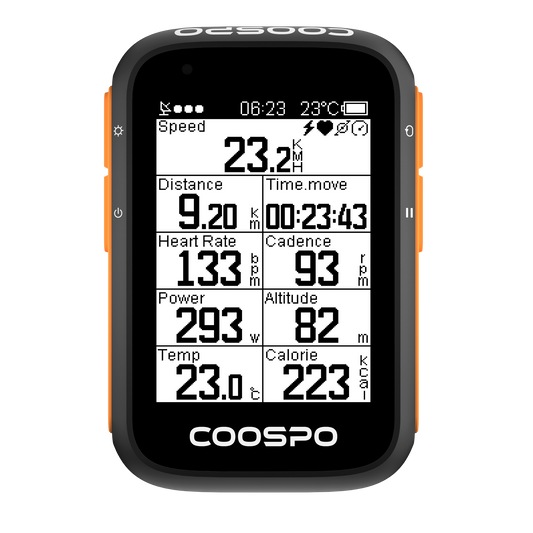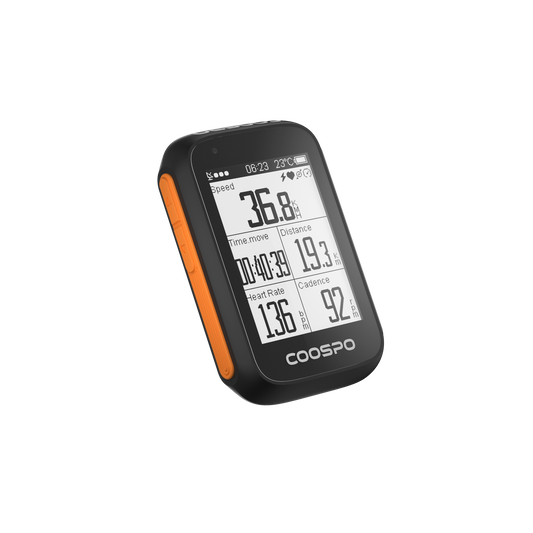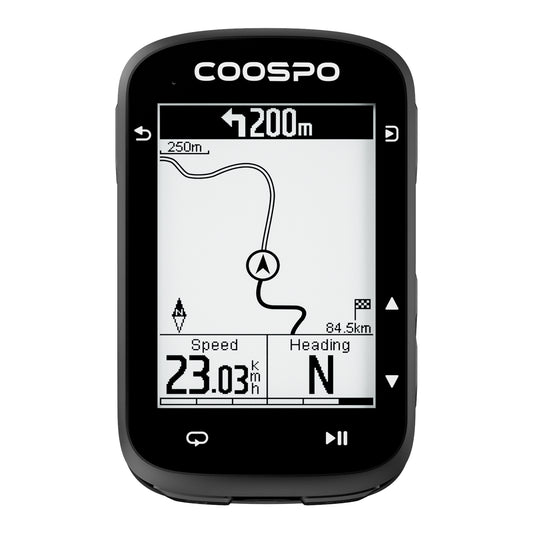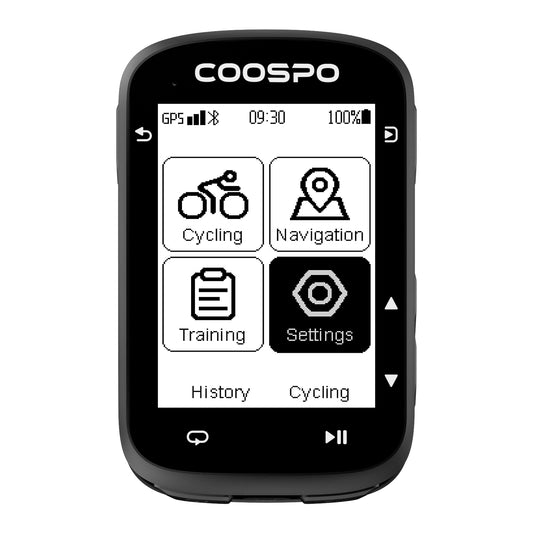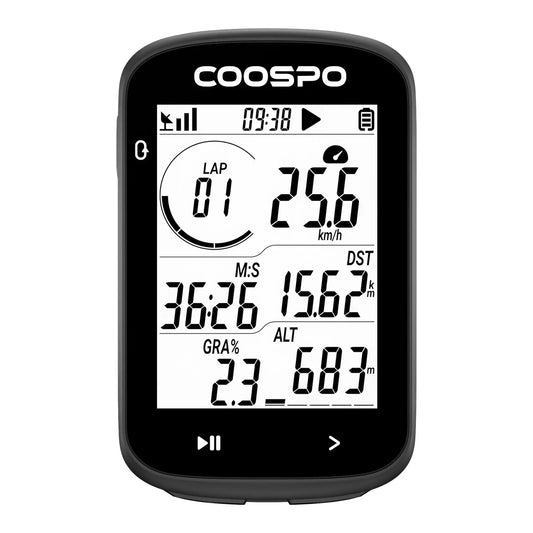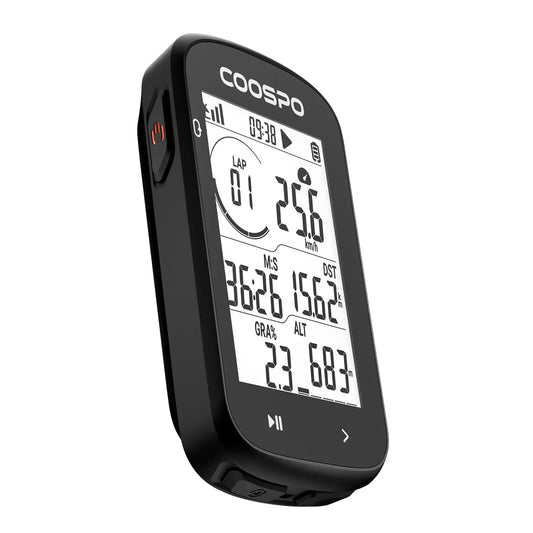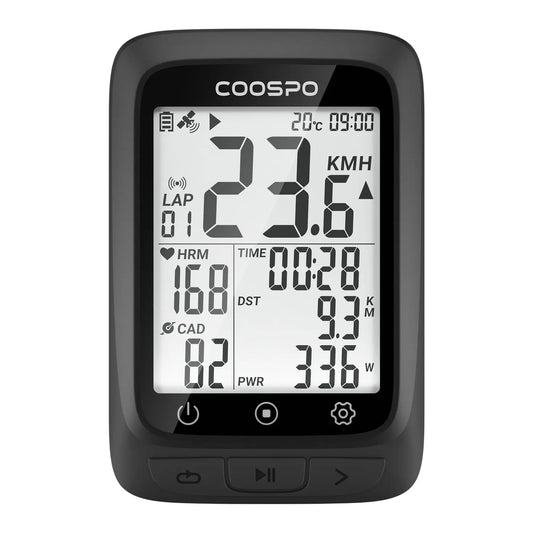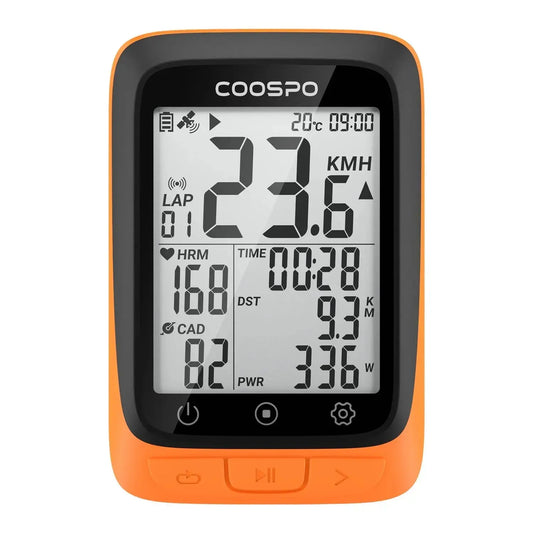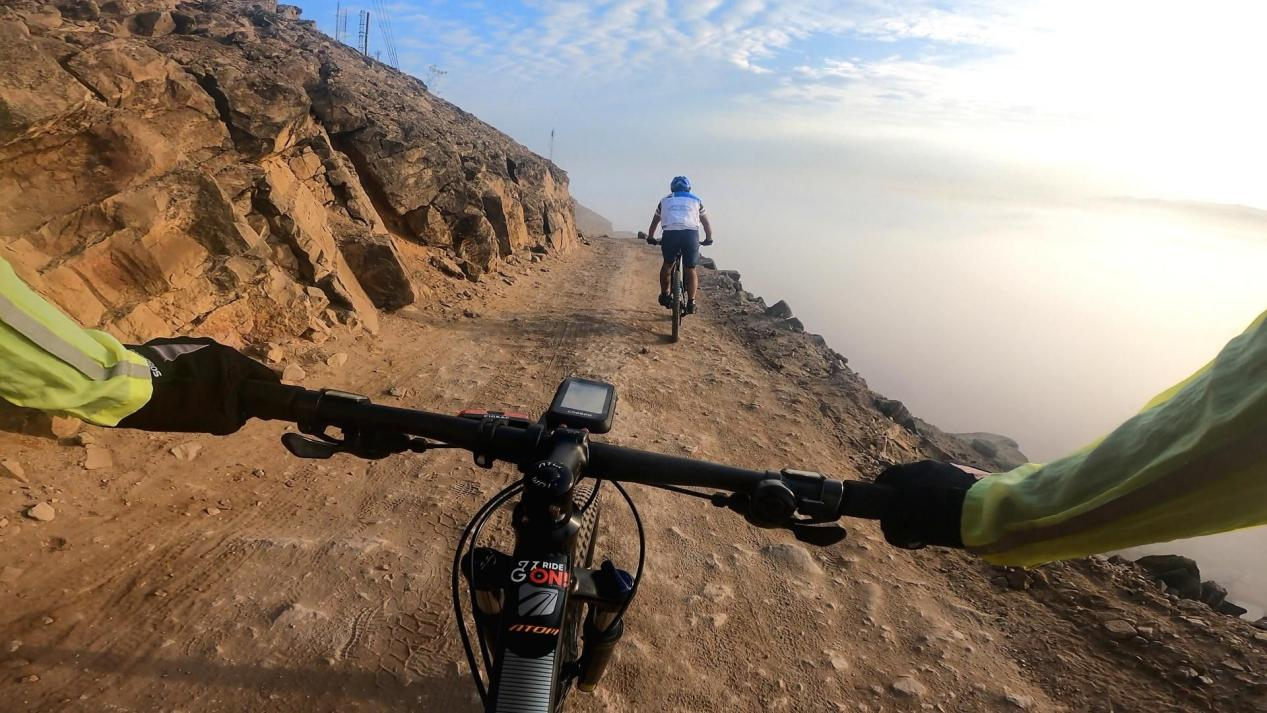Effective Ways to Increase Cycling Cadence
Cycling cadence refers to the number of pedal revolutions per minute (RPM) while riding. It's a crucial factor in cycling efficiency, particularly for those aiming to boost their speed, endurance, and overall performance. Many cyclists, especially newcomers, prefer a slower cadence of 50 to 60 RPM. However, most experts agree that the optimal cadence for cycling efficiency falls between 80 and 90 RPM.
Cadence, which is how fast you pedal, is just as important as power and heart rate for cyclists. It affects both your muscles and your heart, making it crucial for all cyclists to consider.

Whether you are a beginner or a seasoned rider, increasing cadence can lead to more efficient cycling, better endurance, and reduced fatigue over time.
Why It’s Helpful to Increase Cadence
You might wonder why you should change your pedaling speed if your current pace feels comfortable. It's a good question! Let's explore why increasing your pedaling speed (cadence) can be beneficial for your cycling.
Increasing cycling cadence has a variety of benefits. Pedaling at the lower end of the spectrum—50 to 60 RPM—offers some strength benefits to our musculoskeletal system from time spent under tension, but if it is the only thing we are doing, we are missing out on a more well-rounded fitness base and potentially placing excess strain on the knee joints. Maintaining a higher cadence means you’re turning the pedals faster, which often allows for more efficient use of your aerobic system rather than relying heavily on muscular strength. When you pedal in a lower gear at higher RPMs, you’re placing less strain on your muscles, which can help prevent fatigue, particularly on long rides.
Cyclists who pedal faster (at a higher cadence) save more energy in their muscles. This helps them ride for longer without getting tired. Pedaling at about 80 to 90 times per minute is easier on your leg muscles. Instead of tiring out your legs, it works your heart and lungs more. This is good because it makes your cycling more efficient. Being more efficient is especially helpful as you get older.
How to Define Your Current Cadence
Before you can improve your cadence, you need to define your current baseline.
Most cyclists ride at an average cadence between 60 to 90 RPM, depending on the type of riding. Road cyclists, in particular, tend to hover around 80-100 RPMs during flat rides but may drop this considerably when climbing or riding into headwinds. Use flatter rides to check your average cadence, or use the lap button on your computer to pull out a flat section of a ride to assess.
To measure your cadence: Use a bike computer or a cadence sensor. Modern bike computers come equipped with cadence sensors that measure your pedaling RPM in real-time. Devices like the Coospo provides great package and precise feedback, allowing you to track your progress over time.

Count manually: If you don't have a bike computer, you can manually count your cadence by timing your pedal strokes for 15 seconds and multiplying the result by 4. This gives you an approximate RPM. You can do this periodically throughout your ride to get a sense of your average cadence.
You might think you're pedaling slowly, but you could be wrong. Many cyclists believe their cadence is lower than it actually is. For example, you might think you're pedaling at 55 RPM when you're really closer to 75 RPM. To avoid unnecessary worry, it's important to measure your actual cadence. Use a bike computer or count your pedal strokes for a few rides to get a true picture of your average pedaling speed.
Some Ways to Increase Your Cadence
1. Shift to an Easier Gear
To increase your cadence, try shifting to an easier gear. This simple trick makes pedaling easier, allowing you to spin your legs faster without straining your muscles. You'll be able to pedal more quickly without feeling like you're pushing too hard against the pedals.
However, if you shift to too light of a gear, you might find that your speed decreases even though your legs are spinning faster. Experiment with finding a sweet spot between a high cadence and maintaining sufficient speed.
Cycling coach Hunter Allen suggests practicing with easier gears. This helps your muscles and heart get used to pedaling faster. Over time, you'll become more efficient and find it easier to ride at higher speeds.
2. Add Spin-Ups to Every Ride
Spin-ups are an excellent technique to gradually increase cadence. These are short bursts where you intentionally increase your cadence as much as possible while maintaining good form, typically for 30 seconds to 1 minute. Afterward, return to your normal cadence and then repeat the process.
How to do spin-ups: Start with a warm-up for about 10-15 minutes. Then shift to a light gear and accelerate your cadence to your maximum sustainable RPM (typically 100-120 RPM) for 30-60 seconds. Return to your normal cadence for a few minutes, then repeat the spin-up. Aim to include 4-5 spin-up intervals in each ride.
Spin-ups help train your neuromuscular system to handle higher cadence efforts. Over time, you’ll find that your ability to sustain higher RPMs will increase without feeling overly fatigued.
3. Set Small Goals
Instead of aiming for drastic changes, set small, incremental goals to gradually improve your cadence. For example, if your typical cadence is around 75 RPM, aim to increase it by 5 RPM in the next few weeks.
Focus on increasing your cadence by 1-2 RPM per week. These small changes allow your muscles to adapt slowly and naturally without overloading them. Eventually, you can aim to maintain a cadence in the 90-100 RPM range, which is often considered optimal for endurance cycling.
Show your cadence on your bike computer screen. This helps you keep track of it while riding. It's okay if you can only pedal faster for a short time before going back to your normal speed. Just try to do this several times during your ride. The more you practice, the better you'll get.
Note that you’re not riding harder during these higher rpm moments, you’re just aiming to pedal faster while maintaining the same power/speed output.
4. Let Go of Smoothness and Focus on Form
Many cyclists are overly concerned with maintaining a perfectly smooth pedal stroke at higher cadences. However, it’s better to focus on maintaining good form than worrying too much about smoothness, especially in the beginning.
When you increase cadence, your legs will naturally become a bit less smooth in the pedaling motion, but that’s part of the adaptation process. Concentrate on keeping your upper body relaxed, engaging your core, and maintaining an even power distribution throughout the pedal stroke.
As you increase your cadence, resist the urge to hunch over or tense up your upper body. Instead, focus on keeping your shoulders and hands relaxed, chest open, and breath fluid. Visualize lifting your feet off the pedals with each stroke, maintaining a light, efficient pedaling motion.
5. Use a Singlespeed
A bike with just one gear, called a singlespeed, might seem like it would make you pedal slowly and hard. However, it can actually help you pedal faster. On flat roads or small downhills, you need to spin your legs quickly to keep moving. That's why some experts recommend singlespeed bikes if you're struggling to change your pedaling speed. With only one gear, you have to pedal faster when the road lets you!
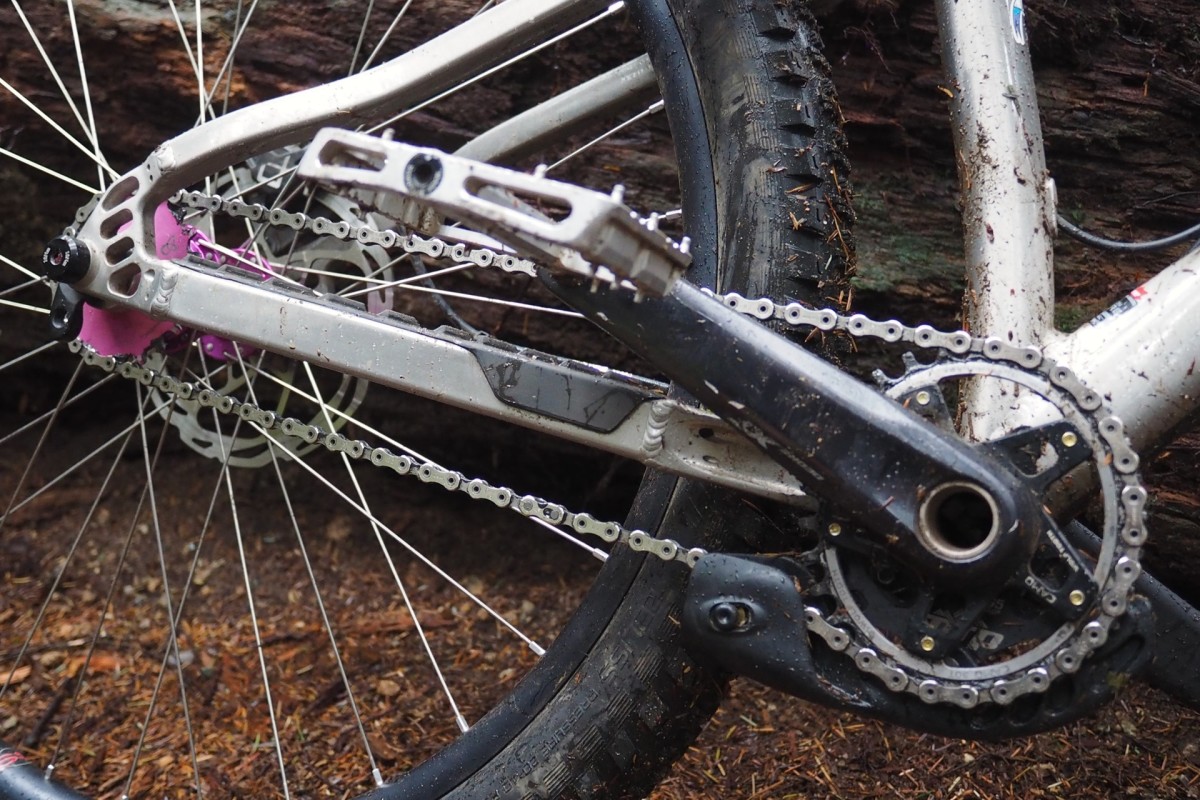
If you don't have a singlespeed bike, you can mimic one by using a middle gear on your regular bike. This practice helps improve your pedaling speed and gets you ready for surprises, like if your electronic shifting stops working during a ride and you’re stuck in one gear!
6. Embrace the Challenge
Improving your cadence takes time and effort, so don’t get discouraged if you don’t see quick results. It’s normal to feel a bit uneasy and have a faster heartbeat when you start pedaling quicker. Just keep breathing steadily and remind yourself that you’re getting stronger with every ride. With practice, your body will get used to the higher cadence, and it will start to feel easier.
Coach Chris Carmichael says that pedaling faster is not just about physical strength, but also about mental toughness. When you practice riding at higher speeds, you're training your mind and your body. This helps you become a better cyclist overall. By getting used to the discomfort of pedaling faster, you'll build up both your physical endurance and your mental strength. These skills will help you in many areas of cycling.
Conclusion
Increasing your cycling cadence improves efficiency, endurance, and overall performance. By shifting to lighter gears, adding spin-ups, setting small goals, and using a singlespeed, you can steadily increase your cadence over time. Consistent practice and patience are key.

To track your progress, use a Coospo bike computer with a Coospo cadence cycling sensor. Connected via Bluetooth, you’ll see your real-time cadence, helping you hit your goals and enjoy smoother, faster rides. Happy riding!



